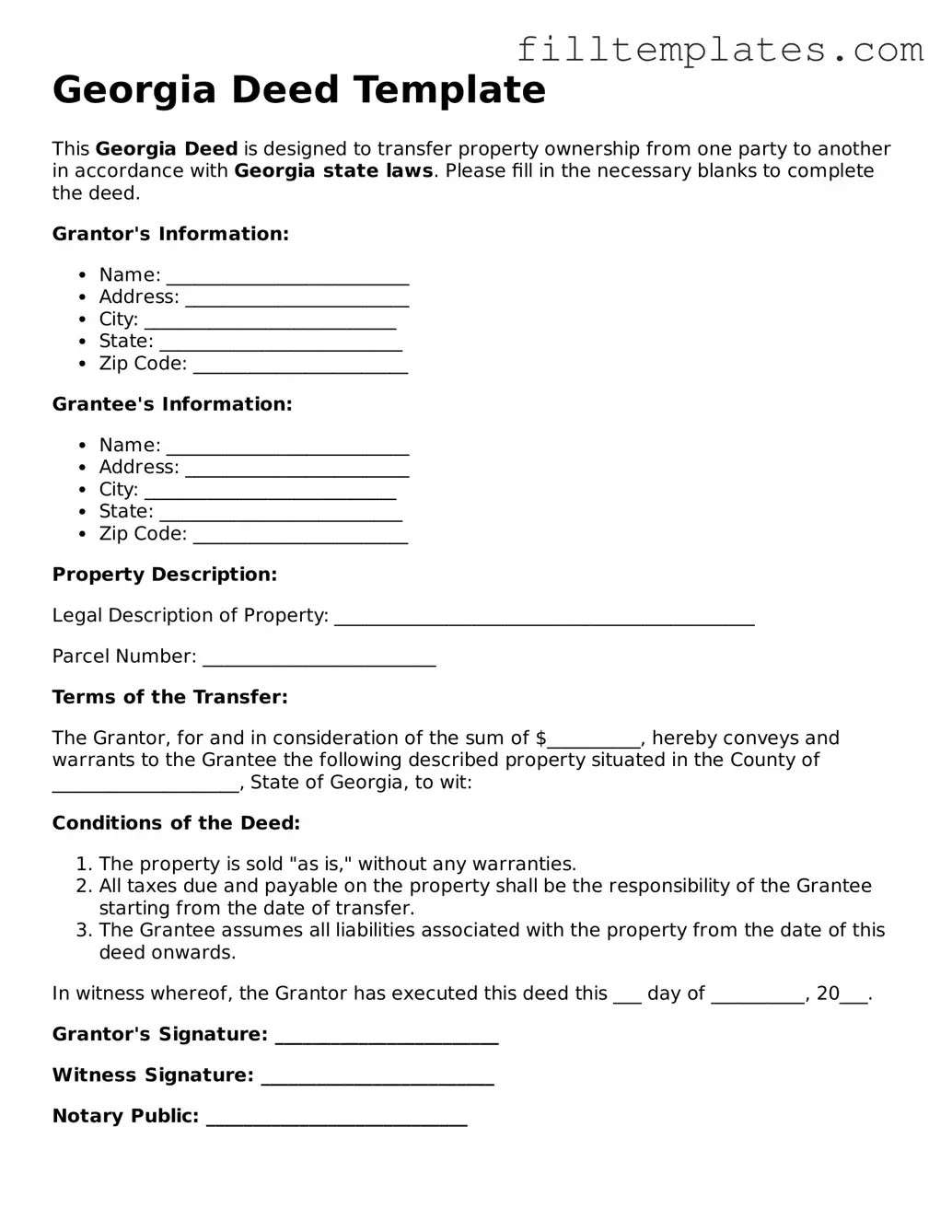Georgia Deed Template
This Georgia Deed is designed to transfer property ownership from one party to another in accordance with Georgia state laws. Please fill in the necessary blanks to complete the deed.
Grantor's Information:
- Name: __________________________
- Address: ________________________
- City: ___________________________
- State: __________________________
- Zip Code: _______________________
Grantee's Information:
- Name: __________________________
- Address: ________________________
- City: ___________________________
- State: __________________________
- Zip Code: _______________________
Property Description:
Legal Description of Property: _____________________________________________
Parcel Number: _________________________
Terms of the Transfer:
The Grantor, for and in consideration of the sum of $__________, hereby conveys and warrants to the Grantee the following described property situated in the County of ____________________, State of Georgia, to wit:
Conditions of the Deed:
- The property is sold "as is," without any warranties.
- All taxes due and payable on the property shall be the responsibility of the Grantee starting from the date of transfer.
- The Grantee assumes all liabilities associated with the property from the date of this deed onwards.
In witness whereof, the Grantor has executed this deed this ___ day of __________, 20___.
Grantor's Signature: ________________________
Witness Signature: _________________________
Notary Public: ____________________________
